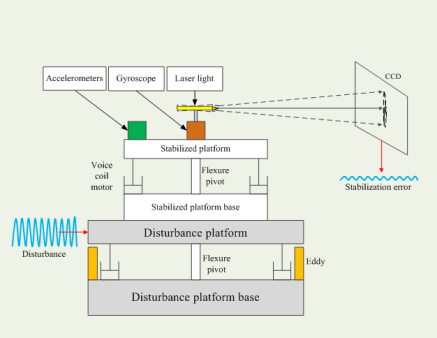Progress on Optical Axis Stability Control
The advanced optical systems such as space laser communication, adaptive optics and space telescope system require very high stability for optical axis. And because of the wide range of application demands, they are gradually installed on moving carriers such as aircraft, ships and spacecrafts. The disturbance of the base on the motion platform will be transferred directly to the optical path, which reduces the stability control precision of the deflection beam and greatly destroys the performance of the system. Especially for the optical communication system between the satellite and the earth, the extremely high requirement for alignment accuracy, the satellite perturbation disturbing the optical path was required to be isolated. With small inertia and high bandwidth, optical stability control system can effectively isolate high frequency disturbances in the base and achieve high accuracy alignment of optical axis. However, the inertial stability control accuracy of optical axis achieved by traditional control methods was limited, and unable to meet the higher requirements for stability control.
A team led by Ren Ge and Mao Yao, from IOE’S Beam Control Key Laboratory, made progress on precise and stable control of optical axis on the moving platform. In order to solve practical engineering problems, the team proposed three methods of a plug-in module acceleration feedback control method, a virtual velocity multiloop feedback control method based on MEMS accelerometers, and a method combining disturbance observer (DOB) with triple-loop control (TLC) based on MEMS accelerometers, focusing on the control structure simplification, multi-data fusion and compound mode control. The ability of active disturbance isolation for the system was strongly enhanced and the stability control performance was improved. Compared with traditional control methods, the control accuracy of optical axis stability was improved several times.
The research results have published in the recent issue of Optical Engineering , Optical Engineering , and Sensors. At the same time, a series of patents related control algorithm were applied.
The research has been supported by National Natural Science Fund Committee, Ministry of Science and Technology, and Chinese Academy of Sciences and other projects.

(GENG Chao)
Contact
CAO Qiang
Institute of Optics and Electronics
Email: caoqiang@ioe.ac.cn
